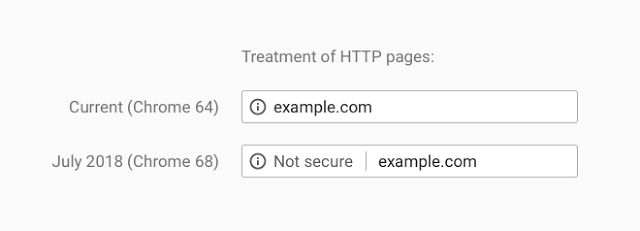It’s official: non-HTTPS sites are penalized since July 2018, as announced by Google in a blog post.
Specifically, the Google Chrome browser marks affected sites as “Not Secure” since that date.
The stakes are high for website publishers, as Chrome is the most used browser in the world – by far.
How will Chrome penalize non-HTTPS sites?
Google Chrome’s penalization of HTTPS sites goes like this:

So, with the arrival of Chrome 68, the browser’s address bar indicates that HTTP sites are “Not secure” (Not secure).
It is not directly a question of penalizing the referencing of the concerned sites, but they may still be negatively impacted. Indeed, the warning of Chrome, which suggests that the site is not reliable, could “scare” visitors and cause a high bounce rate. And the risk is all the greater since Chrome is the most popular browser.
What is the status of the transition to HTTPS?
This measure is in line with previous actions of Google, which has been encouraging webmasters to secure their sites for several years.
And this commitment has borne fruit, as the search engine attests in its blog post:
- Over 68% of Chrome traffic on Android and Windows is now protected;
- Over 78% of Chrome traffic on iOS and Mac is now protected;
- Of the top 100 sites on the web, 81 use HTTPS by default.
Should we switch to HTTPS?
Switching from HTTP to HTTPS is becoming more and more of a necessity, and sites that still haven’t taken the plunge are probably suffering the negative consequences of the Google Chrome update.
Webmasters whose sites are still in HTTP should therefore seriously consider installing an SSL certificate soon in order to secure their site.
However, the operation can be more or less complex, depending on the size and nature of the site. If you are unsure of how to activate an SSL certificate and switch your site to HTTPS, consult a security specialist.